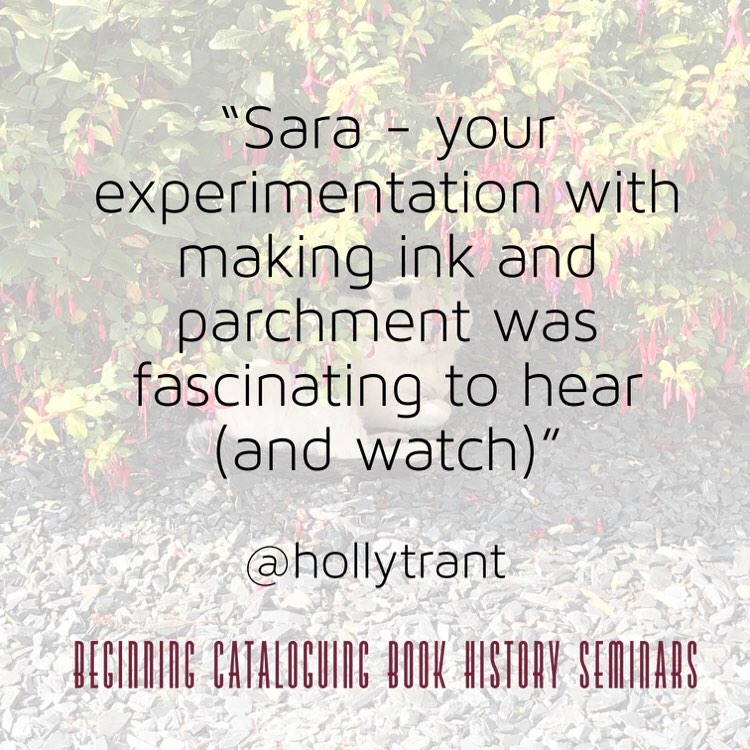
Last week saw the first of our Book History Seminars, led by Sara Charles (Teaching Manuscripts) and I took the Chair’s prerogative to write the event report.
Sara is part of a growing number of researchers who unite their love of making and their love of research by using historical remaking in their academic work. From Alan May’s experiments in making printing presses through Joumana Medlej’s Inks and Paints of the Middle East (and her forthcoming Wild Colours: Seasonal Inks and Paints) to Jessie Wei-Hsuan Chen’s Hortus Floridus Iessi, people are finding more and more imaginative methods to engage with the ways in which early books were made.
Sara was first introduced to the potential of making at a workshop by Patricia Lovett, one of the leading teachers of calligraphy and illumination. Having used the equipment Patricia provided in her workshop, Sara came away not only wanting to make more images but also to understand how manuscripts were made – by actually making some herself.
Her journey so far has led her to cut quills from goose feathers, make inks from foraged oak galls and from woad she grew in her own suburban garden, and create parchment, firstly from rawhide and then from goatskin (the latter after having passed the appropriate qualifications, including health and safety and food hygiene). Her older son made a stretching frame for her to prepare her parchments and has now almost finished building a log cabin for her to use as a workshop, since interest in her company Teaching Manuscripts has really taken off.
In our seminar, Sara spoke about the focus of her interest being to gain a practical and visceral understanding of the processes in which people would have been involved in a medieval house of reasonable but not unlimited means, and so she tries to use the things that they could find in order to immerse herself in her project. She makes modern adjustments where necessary – in her video on stretching the parchment she discusses how she has used an adapted method to attach the drying skin.
Adjustments like these are within her remit because what she really wants to do is overcome her original unfamiliarity with the materiality. Like many people she had never knowingly touched parchment until later in her life, and in the last ten years she has realised that there are barriers we face as modern people because we are not used to aspects that medieval people would have taken for granted – the smell of the parchment, the way that it moves, how it feels under the quill as the ink moves across it.
Sara also spoke about the contemplative nature of her work. Repetitive actions, like scraping and pumicing a skin take on a meditative quality. She quoted John 1:1 “In the Beginning was the Word,” and spoke about how the monks and nuns working to create books in medieval times were carrying out tasks that they felt brought them closer to God.
As well as helping with the Codicology for her PhD research (into an Usuard martyrology), Sara has found that making manuscripts has highlighted to her the importance of lived experience – she feels the physical aches and pains at the end of the day as any parchment maker would, and this gives her an understanding she had not quite expected when she started out as a maker.
There is a chance to hear Sara speak on a related topic as part of the Being Human Festival on Sunday 15 November, when she is giving An Introduction to Medieval Ink. Her workshop for the Festival on Making Medieval ink is already sold out, but she is working on providing similar ink-making kits in future through her website Teaching Manuscripts.
In Summer 2021, Beginning Cataloguing will be theming our book history and general seminars and including other workshops to form a Summer of Making, both physical and virtual, and Sara will be returning to speak for us again then. Watch this space and our newsletter Beginning Cataloguing Monthly for announcements.